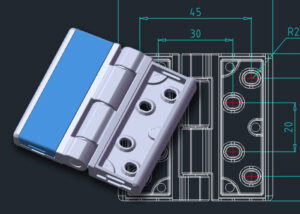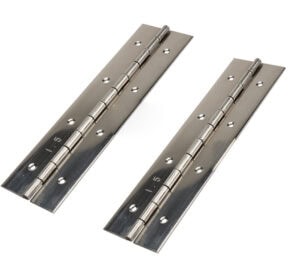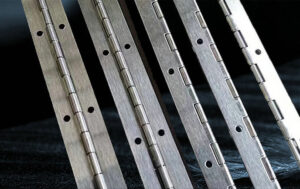Choosing the wrong hinge type can lead to frequent door maintenance, costly repairs, and even structural damage. Understanding the difference between standard and heavy weight hinges can prevent these issues and ensure long-term durability. Here’s how to choose the right hinge for your needs.
Standard weight hinges are suitable for light to medium duty applications, while heavy weight hinges are designed for heavy or high-traffic doors. The key differences lie in their material thickness, load-bearing capacity, and durability.
Let’s explore the primary differences between standard and heavy weight hinges in detail.
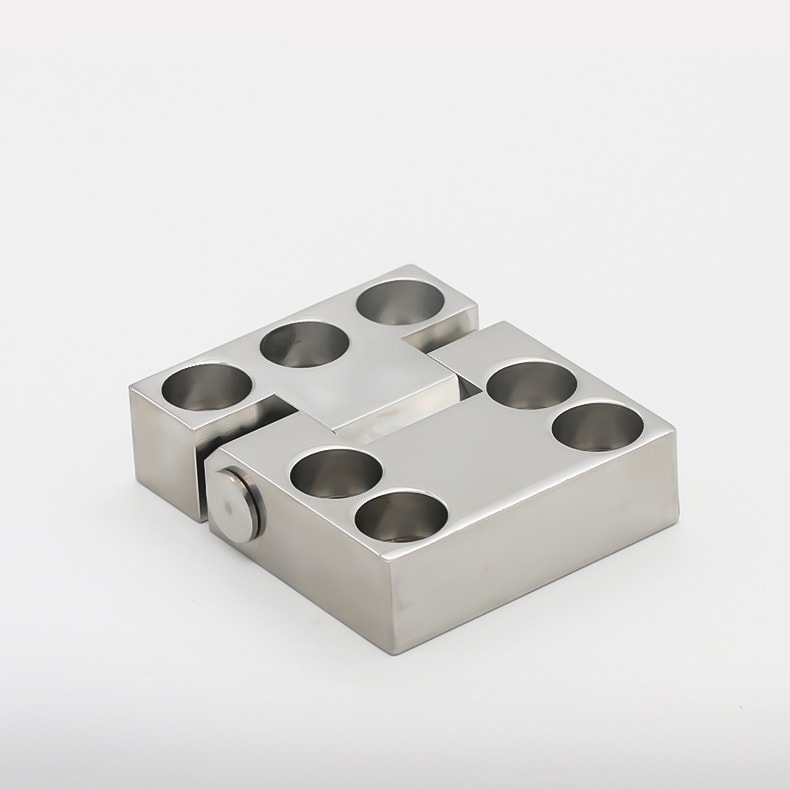
What Are Standard Weight Hinges?
Standard weight hinges are typically used for lighter applications, such as residential doors and low-traffic commercial spaces. These hinges are made from thinner materials, usually around .134 inches thick for steel, and are more affordable than heavy weight hinges. They are ideal for interior doors that don’t need to support excessive weight.
These hinges are versatile and commonly found in residential settings. However, they are not designed to handle high-traffic or heavy-duty doors, which can lead to wear and tear over time. For industrial applications or more demanding environments, standard hinges may not provide the required support, leading to frequent replacements or door misalignment.
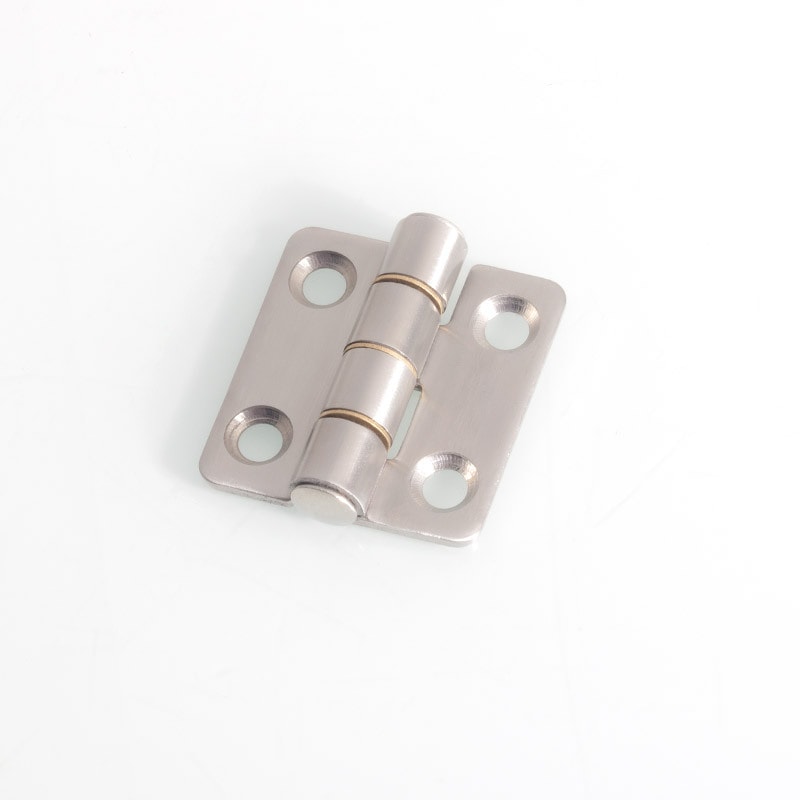
What Are Heavy Weight Hinges?
Heavy weight hinges are designed for strength and durability, ideal for heavy doors and high-traffic areas. These hinges are made from thicker materials, typically around .180 inches or more for steel. Their construction allows them to handle heavier loads, making them a preferred choice for commercial and industrial doors, such as those found in cold storage rooms or industrial-grade ovens.
Heavy weight hinges are often used on doors weighing 200 pounds or more, such as solid core wood or metal doors. They are more expensive than standard hinges, but their ability to withstand frequent use without warping or sagging justifies the cost. In environments where durability and load-bearing capacity are essential, heavy weight hinges offer a long-term solution.
Key Differences in Material Thickness
The most notable difference between standard and heavy weight hinges is the thickness of the hinge leaves. Standard hinges generally have a thickness of .134 inches for steel, while heavy weight hinges are .180 inches or more. This difference in thickness directly impacts the hinge’s strength and load-bearing capacity.
For heavy duty applications, such as marine hinges or trailer door hinges, the increased thickness of heavy weight hinges ensures that the door remains properly aligned and functional, even under constant use. Standard hinges, in contrast, can buckle or warp under the pressure of heavy doors over time.
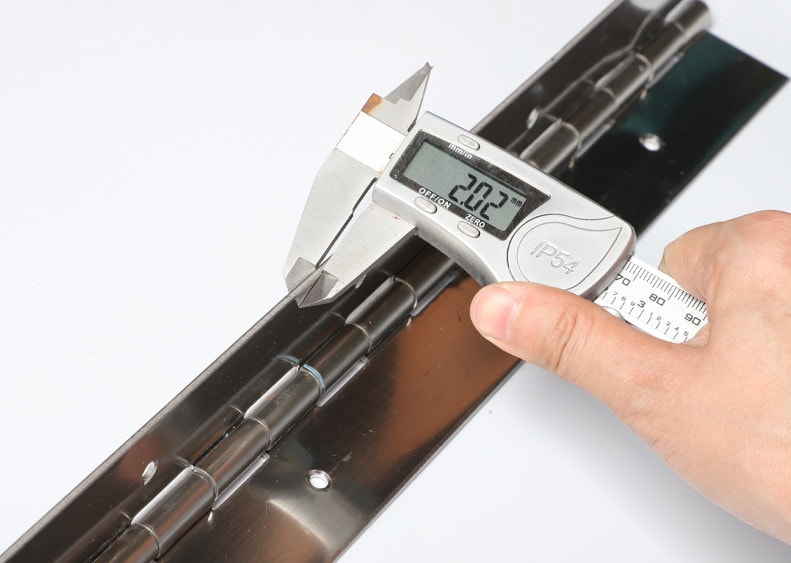
Load-Bearing Capacity
Heavy weight hinges are built to carry far more weight than standard hinges. While standard hinges are adequate for doors weighing less than 200 pounds, heavy weight hinges can support much heavier doors without any issue. This makes them suitable for industrial applications, like climatic test chambers and high-security doors.
The added strength of heavy weight hinges helps prevent sagging or door misalignment, which can occur when using standard hinges on doors that exceed their load-bearing capacity. For long-lasting functionality, especially in demanding environments, heavy weight hinges are the clear choice.
Durability and Lifespan
Heavy weight hinges are engineered for longevity, especially in high-traffic or heavy-duty applications. Their thicker construction means they can endure the constant opening and closing of doors without deteriorating quickly. In contrast, standard weight hinges are likely to wear out faster in such conditions, potentially leading to sagging doors or mechanical failures.
When considering the lifespan of your hinges, it’s crucial to assess the frequency of use and the weight of the doors. Heavy weight hinges are a smart investment for doors that require enhanced durability and continuous functionality.
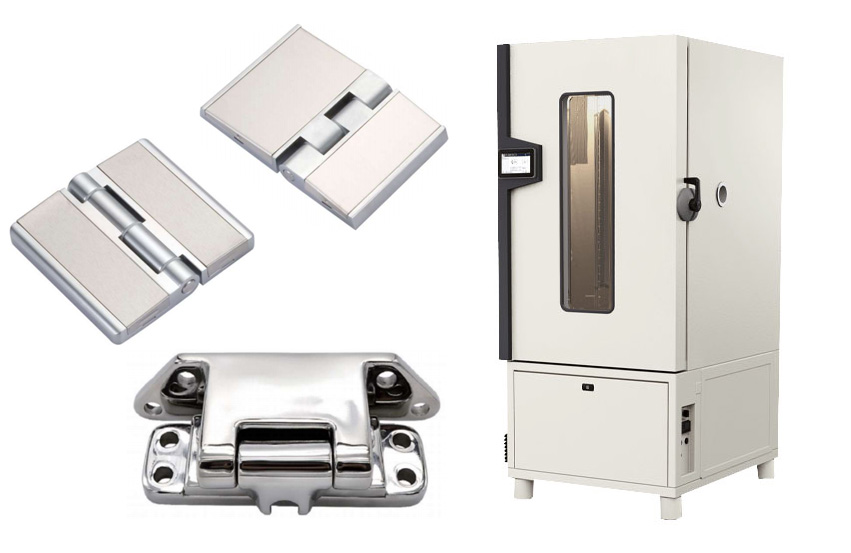
Application Areas for Standard vs. Heavy Weight Hinges
Standard hinges are best suited for residential doors, lightweight commercial doors, and low-traffic areas. They are perfect for interior doors or lightweight exterior doors that don’t endure excessive strain. Heavy weight hinges, on the other hand, are used in high-traffic, high-demand environments. These include industrial facilities, commercial buildings, and doors that experience constant use or need to support heavier materials.
In particular, heavy weight hinges are essential for heavy-duty doors like fire doors, security doors, or any entryway in a facility where safety and durability are top priorities.
Difference Between Ball Bearing and Plain Bearing Hinges
Another critical difference between standard and heavy weight hinges is the type of bearing mechanism they use. Heavy weight hinges often come equipped with ball bearings, which reduce friction and allow for smoother door operation. These ball bearings make heavy weight hinges ideal for high-use environments, as they minimize wear and extend the lifespan of the hinge.
On the other hand, standard weight hinges typically use plain bearings, which are less efficient in reducing friction. Over time, the increased friction in standard hinges can lead to faster wear, particularly in heavy doors or high-traffic settings.
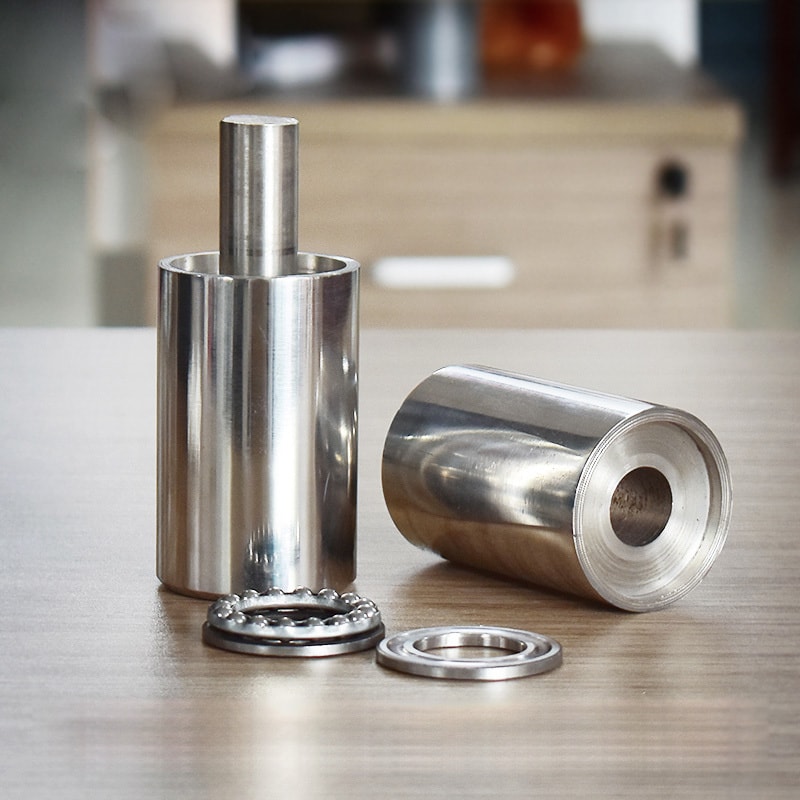
Hinge Grades and Their Importance
Hinges are categorized by grades that determine their strength and durability. Grade 1 hinges are the strongest and designed for heavy-duty applications, such as those found in commercial settings. Grade 2 hinges are used in moderate-duty environments, while Grade 3 hinges are suitable for light-duty applications, like residential doors.
Heavy weight hinges often fall under Grade 1 or 2, making them suitable for environments where strength and durability are crucial. Standard weight hinges are usually Grade 3, which is adequate for residential and light commercial use.
Selecting the Right Hinge for Heavy Doors
For heavier doors, such as those used in industrial settings or for security purposes, heavy weight hinges are essential. They offer the necessary support and ensure the door functions correctly without the risk of sagging or misalignment. If a door weighs more than 200 pounds, or if it is in a high-traffic area, heavy weight hinges are the best option to ensure safety and longevity.
Can a Door Be Too Heavy for Hinges?
Yes, using standard hinges on a heavy door can cause the door to sag or fail over time. This is why it’s critical to choose the appropriate hinge based on the door’s weight and frequency of use. Heavy weight hinges are specifically designed to handle heavier loads, preventing door malfunctions and ensuring smooth operation.
Conclusions
Choosing the right hinge—standard or heavy weight—depends on your door’s size, weight, and usage. Ensure long-term durability by selecting appropriately.

